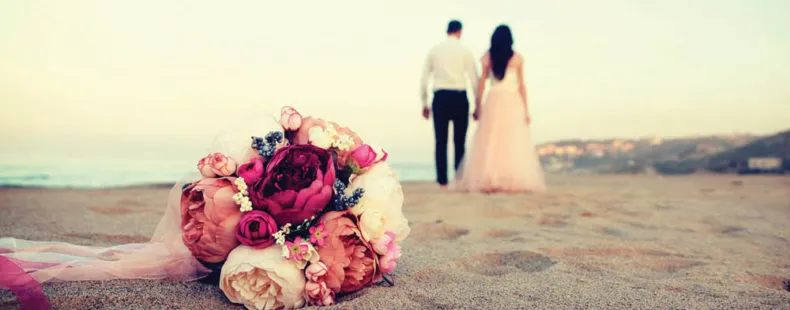The Ancient Roots of Honeymoons
The concept of a honeymoon, as we know it today, is a fascinating blend of ancient customs, cultural traditions, and evolving social norms. The origins of this post-wedding getaway can be traced back thousands of years, offering a glimpse into how different societies celebrated the union of a couple. Unlike the modern emphasis on romantic travel, early honeymoons often served practical and symbolic purposes. They were deeply intertwined with rituals, beliefs, and the practicalities of establishing a new household. Understanding these roots sheds light on the rich history behind this beloved tradition and reveals how it has transformed over time, mirroring societal changes and the evolving roles of marriage and family. The ancient roots provide a glimpse into the motivations behind this celebration and the evolution of this practice.
The Babylonian Connection
One of the earliest documented precursors to the honeymoon can be found in ancient Babylonia. During this time, it was customary for the bride’s father to provide his daughter with mead, a honey-based alcoholic beverage, for an entire moon cycle after the wedding. This period, lasting approximately one month, was a time of celebration and fertility rituals. The consumption of mead was believed to enhance fertility and ensure a successful marriage. This practice gave rise to the term “honey month”, which over time evolved into the word “honeymoon”. This tradition wasn’t just about pleasure; it was about ensuring the couple’s prosperity and the continuation of the family line. These ancient practices set the stage for the customs and traditions we see today, adding a rich layer of history to this beloved tradition.
Rituals and Customs of the Time

In Babylonian society, weddings and the subsequent month-long celebrations were steeped in rituals and customs. These practices were designed to appease the gods, ensure fertility, and bring good fortune to the newly married couple. Various ceremonies, often involving sacrifices, offerings, and prayers, were performed to bless the union. The consumption of mead was central to these rituals, acting as a symbol of the sweetness of life and the hope for a fruitful future. The entire community participated in these festivities, reinforcing social bonds and celebrating the creation of a new family. These customs underscore the societal significance of marriage and the importance of celebrating new beginnings. The detailed rituals and customs highlight the importance of marriage in Babylonian culture.
The Influence of Mead
The significance of mead in the early honeymoon traditions cannot be overstated. Mead, a fermented beverage made from honey, water, and yeast, was considered a sacred drink in many ancient cultures. It was associated with fertility, health, and prosperity. Its sweet, intoxicating nature made it ideal for celebrations. The practice of drinking mead for a month after the wedding symbolized a period of transition, indulgence, and preparation for the couple’s future. It was a time when the newlyweds could focus on each other, establish their relationship, and hopefully conceive a child. This period of rest and celebration, fueled by mead, was integral to ensuring the success of the marriage, cementing the importance of the honey-based beverage in the ritual.
Why Mead Was Significant
The significance of mead went beyond its celebratory nature. Honey, the main ingredient, was associated with sweetness, health, and divine favor. In ancient cultures, honey was a precious commodity, symbolizing wealth and abundance. Mead provided the couple with a dedicated time for bonding, away from their families. The consumption of mead was also seen as a way to ensure fertility. The intoxicating effects of the beverage may have played a role in encouraging intimacy and creating an environment conducive to conception. Mead’s importance shows how ancient societies connected daily life with spiritual and social values.
From Kidnapping to Celebration

Another intriguing aspect of honeymoon history involves the practice of bride kidnapping. While it might seem barbaric by today’s standards, this custom was prevalent in various cultures and served as a means of initiating marriage. In some societies, the groom would “kidnap” the bride from her family, a symbolic act of claiming her and establishing his authority. The couple would then retreat to a secluded place, away from the bride’s family, to consummate their marriage and begin their life together. This act, often a ritualistic reenactment of conquest, eventually evolved into a period of seclusion and bonding. Understanding this history provides insight into the societal power dynamics of ancient times and the evolution of marital practices. These acts of “kidnapping” were transformed and reinterpreted, eventually setting the stage for the more celebratory traditions that we know today.
The Roman Influence
In Roman society, weddings were grand affairs, often followed by a period of celebration and rest. While the concept of a honeymoon as a separate journey wasn’t fully established, Roman customs influenced many aspects of marital traditions. After the wedding ceremony, the bride and groom would often spend several days together, celebrating with family and friends. This time was characterized by feasting, revelry, and the exchange of gifts. The couple’s seclusion was a period for them to solidify their new relationship and begin their life together as a married couple. These practices show the Romans’ view on the importance of celebrating the union of two people. It was a moment for the couple to focus on each other and begin their new life together.
The Role of Brides and Grooms
The roles of the bride and groom in Roman society were clearly defined. The groom was expected to provide for his wife and family, while the bride was responsible for managing the household. The honeymoon period, even in its nascent form, allowed the couple to transition into these roles. It provided a space for the couple to bond, discuss their expectations, and set the foundation for their married life. The honeymoon was thus a moment to establish a shared understanding and the mutual respect upon which their marriage was built. The different roles of the couple, as well as the importance of the honeymoon period, set the stage for the modern understanding of this celebration.
The Transition to Modern Practices

As societies evolved, so did the customs surrounding marriage. The practices of the ancient world gradually transformed, giving rise to the more familiar honeymoon traditions of today. With the rise of the Middle Ages, the emphasis shifted from fertility rituals to romantic ideals. While the origins of the honeymoon are rooted in practical and symbolic purposes, the shift towards romanticism significantly shaped modern traditions. This transformation reflects changes in societal values, and the changing roles of women in society. The focus moved from the practical to the emotional, from providing for the continuation of the family line, to a romantic getaway for the newlyweds. The shift from ancient rituals to romantic ideals set the stage for today’s honeymoon celebrations.
The Medieval Period and Beyond
The Middle Ages marked another turning point in the evolution of honeymoon traditions. The focus shifted from the practicality of the early days to the romantic ideals that began to take hold. Instead of solely emphasizing fertility and familial bonds, medieval societies began to embrace the concept of romantic love. It became fashionable for newlyweds to spend time together, away from the pressures of their families, solidifying their union. This transition, from a period of seclusion to a romantic getaway, laid the groundwork for the modern honeymoon. These practices reflect the changing ideals of medieval society.
The Development of Honeymoon Travel
The practice of honeymoon travel didn’t truly take off until the 19th century, with the rise of industrialization and increased travel opportunities. The wealthy elite began to travel for pleasure, including newlyweds who sought out luxurious destinations. The development of railways and steamships made travel more accessible, allowing couples to explore new places and create lasting memories. This trend continued to grow throughout the Victorian era, with romantic destinations becoming increasingly popular. This period marks the beginning of honeymoon travel as we know it today, driven by both wealth and societal shifts. These developments enabled couples to experience new cultures and solidify their bonds away from the pressures of daily life.
Early Travel and Destinations

The early honeymoon destinations for wealthy couples often included the burgeoning resorts of Europe. Cities such as Paris, Venice, and the Italian Riviera became highly sought-after destinations. Couples enjoyed the opportunity to experience fine dining, luxurious accommodations, and the vibrant social scene of these locations. These trips were a symbol of status and a celebration of the couple’s union. Early travel was an experience for the privileged, contributing to the romanticization of travel for newlyweds. These destinations set the stage for the popular honeymoon locations that exist today.
The Victorian Era and Romanticism
The Victorian era marked a significant shift towards romantic ideals, influencing every aspect of life, including marriage and honeymoons. Romanticism emphasized the importance of love and emotional connection, which transformed the way couples viewed their time together. This period saw the rise of romanticized depictions of travel and the desire to create unique, memorable experiences. Honeymoons were no longer just about fulfilling social obligations, but about celebrating a couple’s love. The Victorian era set the stage for modern honeymoon traditions, with a focus on luxury, romance, and creating unforgettable experiences. This shift emphasized the significance of emotional connection in marital relationships.
The Evolution of Honeymoon Traditions
The evolution of honeymoon traditions is a testament to the changing values of society. From ancient rituals focused on fertility and family to the romantic getaways of the Victorian era, honeymoons have always reflected the ideals and expectations of the time. As cultures changed, so did the purposes of the post-wedding celebration. The modern honeymoon is a blend of the past, with echoes of ancient customs, combined with the modern desire for travel, adventure, and romance. The flexibility of modern honeymoons means that today there is a wider range of choices and possibilities for couples. The ongoing evolution highlights the adaptability of this tradition, showing its capacity to change and adapt to different cultural values.
Modern Honeymoon Trends

Today, honeymoons are more diverse than ever. Couples have a wide array of choices, from relaxing beach getaways to adventurous explorations. Popular trends include eco-tourism, wellness retreats, and cultural immersion experiences. The focus has shifted from simply escaping to a luxurious hotel to creating unique, personalized experiences. This flexibility allows couples to tailor their celebration to their interests and values. Today’s trends highlight the importance of personalization and the desire for meaningful travel experiences. Couples are actively seeking destinations that align with their passions and values, resulting in a diverse range of honeymoon options.
Popular Destinations and Activities
Some of the most sought-after honeymoon destinations include tropical paradises like the Maldives and Bali, adventurous locales like Costa Rica and New Zealand, and culturally rich cities like Paris and Rome. Activities range from lounging on the beach to exploring ancient ruins, enjoying spa treatments, and participating in adventurous excursions. There are also more options available, such as all-inclusive resorts, cruises, and customized itineraries. This multitude of choices emphasizes the importance of creating a trip that reflects the couple’s unique interests. These destinations and activities embody the diversity of honeymoon experiences today.
The Future of Honeymoons
The future of honeymoons is likely to involve even greater customization and a focus on sustainability and experiential travel. As couples become more conscious of their environmental impact, sustainable travel options will grow in popularity. The demand for unique, off-the-beaten-path experiences will continue to rise. As a celebration of love, honeymoons will adapt to the changing needs and interests of modern couples. This constant evolution reflects the tradition’s enduring relevance and ability to adapt to changes in society. The focus on sustainability and personalized experiences shows that the honeymoon will continue to evolve with the times.
